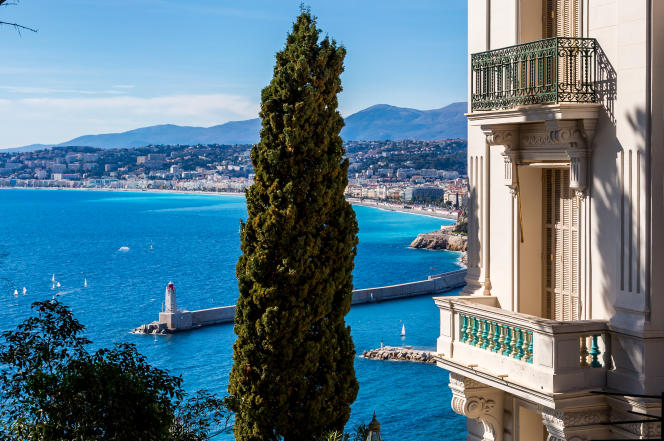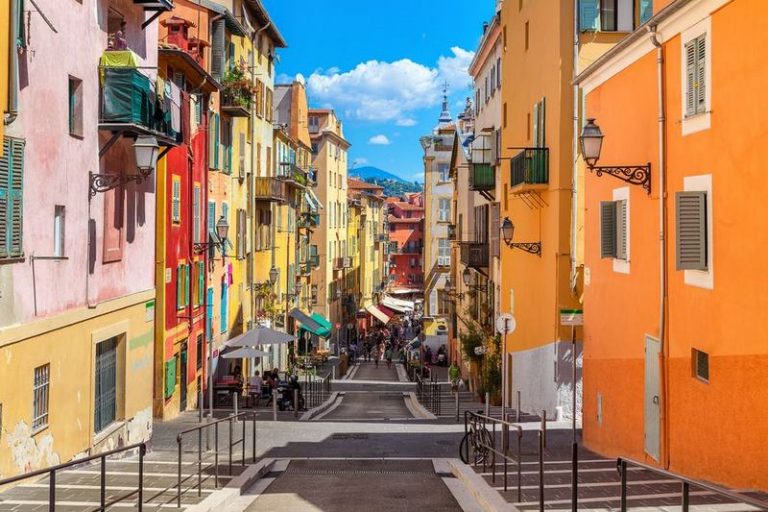Promenade des Anglais
A stroll along the Promenade des Anglais, the road that runs a few kilometers along Nice’s coastline, is a must. Walk side by side or cycle on roads reserved for pedestrians and cyclists. You can also take part in a guided Segway tour.
famous seaside promenade
This famous seaside promenade, which has always flourished with elegance, encompasses the harmonious curve of the Baie des Anges and was originally just a two-metre-wide road. It was an Englishman, the Reverend Lewis Way, who had it built on his own coast in 1820. It was immediately dubbed the “English Way” by the local population. In its final form, two carriageways separated by a palm-lined loop, the opening of “LA PROM” was celebrated in 1931 by the Duke of Connaught, one of Queen Victoria’s sons.
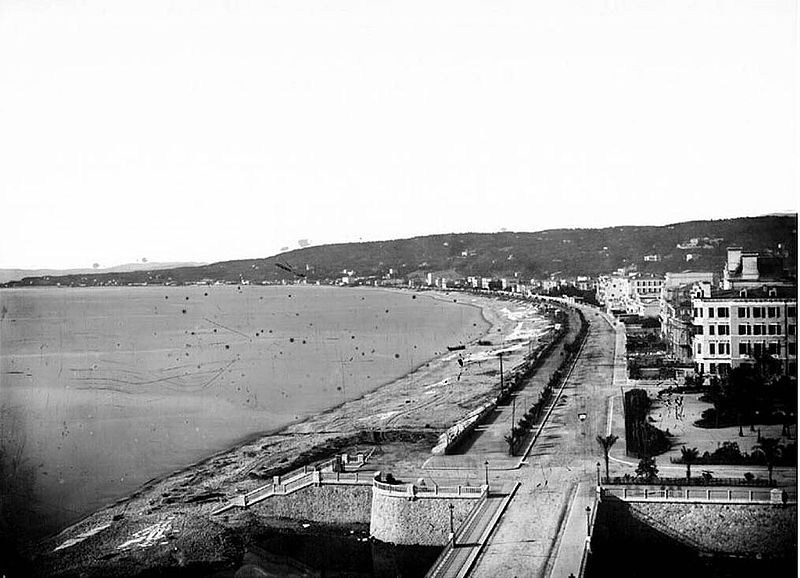
A brief history
Since the 19th century, the English have made the Baie des Anges their favorite winter resort on the initiative of the Reverend Lewis Way, who gave his name to the world’s most famous seaside promenade. He gave Nice its cosmopolitan, aesthetic identity between the sea and the palm trees.
Nice’s relationship with the sea has long been purely utilitarian and often anxious. The utility lies in fishing, unproductive due to the depth of the sea bed, and trade, which has been hosted in the Ponchette cove without fixed port facilities since the early 18th century. In addition to the violence and sudden storms of the Mediterranean, it depends to a large extent on the omnipresence of free booty out of fear, whether from Christians (Genoese, Provençal, Monegasque or Catalan) or barbarians.
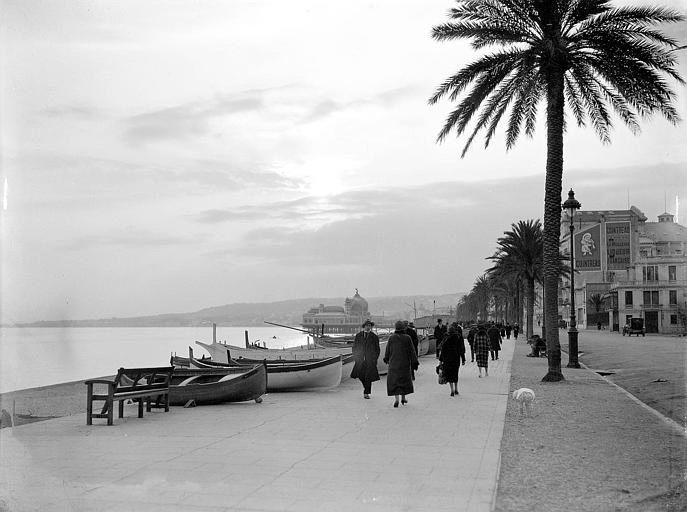
As far back as the 14th century, this fear led to the construction of a wall along the coastal part of the city (i.e., today’s old town of Nice), crossed by a single gate, the Porte de la Marina. In the 18th century, several events suddenly opened the city to the sea: the destruction of its walls by Louis XIV’s army in 1706, the transfer of commercial activities to the new port of Lympia in 1751, the arrival of the first British winterers in the 1760s, the construction of terraces in 1770 and the opening up of its waterfront changed Nice’s relationship with the sea. This change led to the creation of the Promenade des Anglais, the first coastal jetty in the world dedicated exclusively to leisure activities.
From humble beginnings
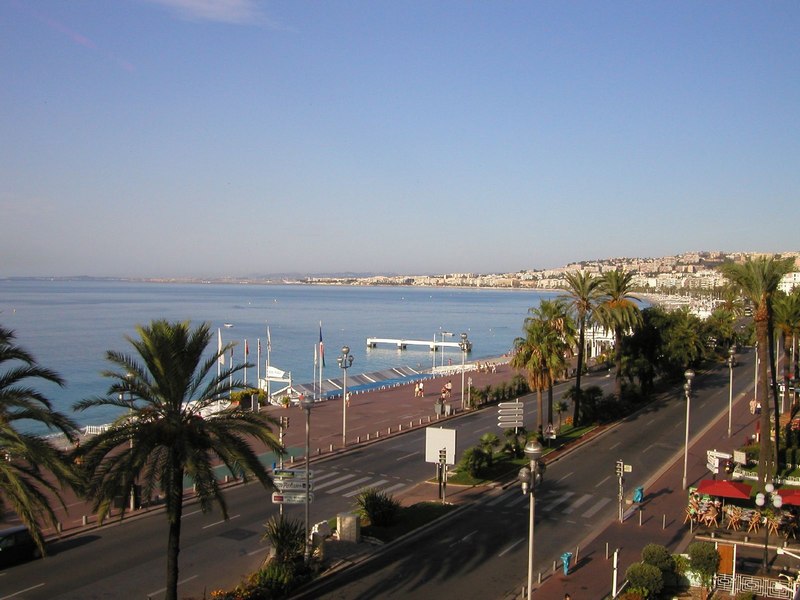
In 1513, the Duke of Savoy granted Charles III of Nice the vacant land between the Route de France (today rue de France and avenue de la Californie) and the sea. The aim was not to create an additional road, but to ensure more efficient development of the coast by residents. Since the mid-18th century, Nice had been considered a winter resort by wealthy Englishmen. During the Revolution and the Napoleonic era, they did not return to our city with the restoration of the House of Savoy (1814). Most are in houses along the Route de France, between Magnan and Paillon, or in the Buffa district, commonly known as “Newborough” or “Little London”. However, the British complain that they don’t take walks by the sea, an innovative practice that combines admiration of the landscape with the search for positive medical effects. It’s a long detour across the Pont Vieux, the only way to cross the Paillon and reach the terraces overlooking the sea, along the Cours de Saleya, a center of secular life since the 17th century.
The seafront promenade
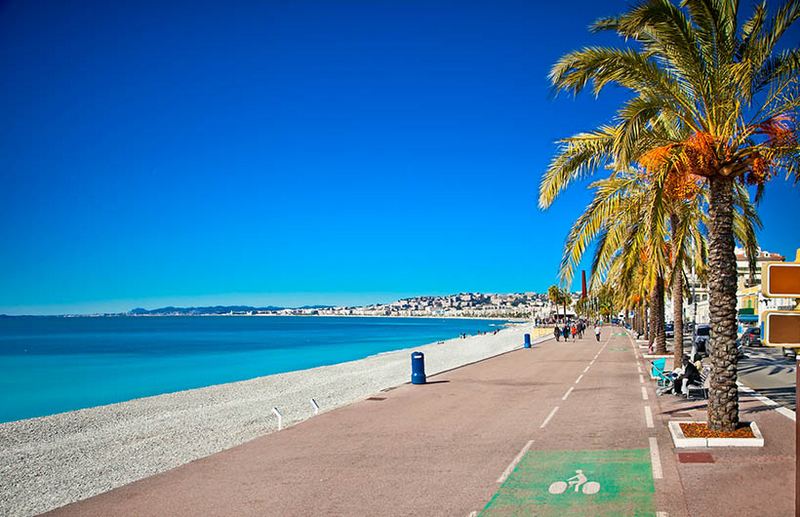
In 1822, misery was high due to poor harvests, and Anglican shepherd Lewis Way launched a subscription to his compatriots to save unemployed residents by levelling a two-meter-wide sidewalk running from Paillon to today’s Rue Meyerbeer. The work was completed in 1824. When public events called it “Strada del Littorale”, the population referred to the new road as Camin dei Inglès or Way of the English. In 1837, the sandy land granted to the town in 1513 was divided into thirty-three lots and sold to private individuals. In 1844, Count Jules Caravadossi d’Aspremont became the town’s first consul, i.e. mayor, and the town council officially named the new road the “Promenade des Anglais”, extended it to Les Baumettes and ordered the planting of flowering trees and shrubs. The seafront promenade reached Magnan in 1856. It was eight meters wide, but there were no sidewalks and it was so dusty that Alphonse Karr wrote: “At the edge of a Mediterranean sea of water, we walk in a sea of dust.” But the movement begins. The new road, dedicated solely to the inactive promenade, borders the villas and hotels associated with its use.


